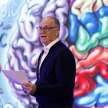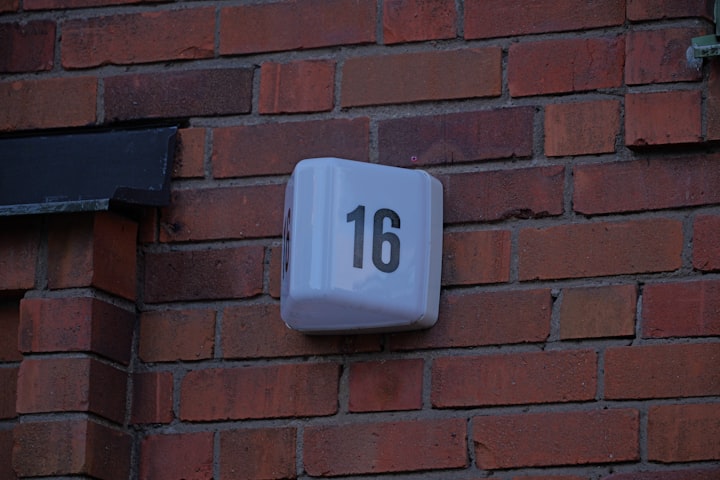How Constraints and Limitations Boost Creativity.
Why we all need boundaries.

In May 1954, Life Magazine published an article on literacy, which reported that children were not learning to read - because most of the books they were reading were boring and didn’t hold their attention. At Houghton Mifflin (now Houghton Mifflin Harcourt) William Spaulding read the article and put together a list of 348 words that he felt were imperative for first-graders to know and be able to read. He went to Theodor Seuss Geise - better known as Dr. Seuss, cut the words down to 250, and challenged Geisel to write a book using only those words. “Bring back a book that children can’t put down” was his directive.. The result was “The Cat in the Hat”.. Geisel used only 236 words, and the book has become one of the best-selling children’s books of alll time.

So often we think that creativity and freedom go hand-in-hand. This is a myth; constraints actually boost creativity. When we’re faced with limitless possibilities, we tend to become paralyzed. Constraints and limitations anchor creativity. If we don’t have any restrictions on our creatvity and problem solving, we invent them or deconstruct them from the challenge, to frame the problem to engage our creative muscle.
So, the question I ask is; Are constraints beneficial or problematic to problem-solving? In my opinion, borne out by Dr. Suess, limitations engender creativity. “necessity is the mother of invention” and comfort is the enemy of progress. Our brains develop by creating branched connections and these connections and new associations are what create our “Aha!” moments. So, the answer is yes! Constraints are beneficial but, if too overwhelming, can also hinder creative thinking. Research has shown that creativity forms a U-shaped curve. When there are no constraints, we tend to feel bored and unstimulated. However, if the constraints and restrictions become too severe, we feel stressed and overwhelmed. The sweet spot lies somewhere in the middle.
Most people have the misconception that creativity as something you have a specific talent for. There is no specific single gene for creative thinking. As Carol Dweck pointed out in her ground-breaking book “Mindset”. Creativity has more to do with having a growth mindset, an open mind, willingness to experiment, and perhaps an ability to embrace failure. A creative attitude is something that can be taught. It is an attitude to problem solving and idea generation rather than an innate talent. If it were only innate, something few are born with, then most people wouldn’t even bother to try.
Constraints and limitations can be either external or internal, objective or subjective, intentional or unintentional.

External limitations may be political, socio-economic, or environmental. In fact, external constraints can include something as simple as the rules of a game. The agreed rules of a game define the boundaries of what is possible, what the rules of engagement are. In fact, without stretching the analogy too far, this is also how communities thrive. We agree, either explicitly or implicitly, to behave in a certain way and this forms the boundaries of acceptable behavior. However, creative thinking is a step towards the edge of those boundaries and sometimes even beyond it. It is a step into uncertainty, a form of risk-taking, and potential failure.
Our brains have evolved to reduce uncertainty. We look for a predictable future and therefore we create reason and rules as to why things happen so that we can predict what will happen next and thus save precious brain energy. For something to be predictable it must follow some theory or rule. These become our beliefs, assumptions, stereotypes that guide our behavior. They are the rules or boundaries with which we predict what will happen next. We create rules and boundaries so that we won’t have to deal with uncertainty. We need explanations for why things happen and that is why storytelling is prevalent in all communities. It is our brains trying to find acceptable explanations for why things happen so that we can understand and give meaning to them. Science and art both try to give us explanations of how and why things happen and how we fit into the picture.

However, not only do we have energy-saving, assumption-creating, brains; we also have restless minds that seek novelty, stimulation, and creativity. True creativity will step into uncertainty and dissonance to find novel explanations. This will require understanding where the boundaries are and then stepping outside them to seek new solutions. Beau Lotto suggests that when observed from outside this may seem as though someone has taken a huge creative leap. In reality, this may simply be that their “next step” involves a mind more open to diverse associations and connections. Creative solutions shed new light on challenges and problems. Creative solutions are a way of giving new meaning to familiar points of view. They step into uncertainty to create new stories that provide new explanations.
Problems are defined by what they limit. Creativity arrives when we have a problem we want to solve. We apply creative thinking and persistence to a challenge or problem. New ideas create new meanings, i.e. they find a solution to the problem. Challenges and problems engender solutions.
Constraints can be crippling for creativity but, at the same time, they are absolutely essential in defining and shaping the nature of the problem or challenge. A new idea would be new if it didn’t change our perspective. If it is too distant from received and accepted wisdom, then it may not add perceived value, certainly in the immediate time-frame. Creative ideas have to have some value for their audience for them to be adopted. That value may be intangible and may be philosophical. Adopted ideas aren’t always for the common good. However, what they do provide is some form of change or transformation. Creative thinking challenges assumptions.

Charlie Chaplin
One of the reasons that comedy delights us, and I would argue that it is highly creative, is that it gives us a new perspective on the human condition. It views things from a different point of view. Most humor starts by setting up the boundaries of the joke; the “set-up”, which is the environment in which the story or joke exists. Then, by suddenly changing direction at the punchline, it surprises us and we are delighted by the novel viewpoint. First, the story must set up its boundaries, its rules. These are often our assumptions and our expectations of what will happen and how the world works. If there was no change in direction we would get what we expected and there would be no surprise or delight. Comedy challenges norms and that’s what we find funny. The same theory could be applied to satire and slapstick, too.
There is a formal Theory of Constraints (TOC) in management practice. This views a system as being limited by a number of constraints. In the cotext of a new project, this may be cost, quality or time.By focusing and identifying the constraint it is possible to restructure an organization or project around it. In my field, design, this would be identifying the specific constraints of the environment (space and location), function and usage, cost, branding, and quality.
The theory states that processes and organizations are only as strong as their weakest link. By identifying the weak link or links, ideas can be applied to address the problem. This is the creative thinking process in design and management. It is the constraint that engenders the solution.
The steps in TOC are similar to those for applied innovation, design-thinking, and most problem-solving techniques.
1. Identify the problem/challenge/constraint.
2. Decide how to exploit the system’s constraint. i.e. pushing boundaries to their logical limits.
3. Subordinate everything else to the above decision.
4. Alleviate the system constraint. i.e. finding a stasficing solution.
5. If in the previous steps a constraint has been broken, go back to step 1, but do not allow inertia to cause a system’s constraint.
A constraint is anything that prevents or defines the system from achieving its goal. There are many ways that constraints can show up, but a core principle within TOC is that there are not tens or hundreds of constraints. There is at least one, but at most only a few in any given system.

Source: Wikipedia
TOC is often used in the thinking process as a set of tools used to help managers walk through the steps of initiating and implementing a project. When used in a logical flow, they help walk through a buy-in process:
1. Gain agreement on the problem
2. Gain agreement on the direction for a solution
3. Gain agreement that the solution solves the problem
4. Agree to overcome any potential negative ramifications
5. Agree to overcome any obstacles to implementation
TOC practitioners sometimes refer to these in the negative as working through layers of resistance to a change.
In sports, the idea of a constraints-led approach is used to define the boundaries which hold back or limit the athlete and thus to leads to changes behavior.
Creativity can set its own limitations and constraints. One of the essences of creative thinking is the ability to create new “rules” that frame the problem/challenge to be solved. We use constraints to enable creativity.
When Theodor Seuss Geisel agreed to write his books using no more than 250 words, he was agreeing to place a straight jacket around the challenge. The results are proof in themselves.
Seuss probably didn’t imagine that 66 years later that Dr. Seuss's books would have sold 650 million copies, be translated into 17 languages, and distributed in 95 countries.
tied-hands.jpg






Comments
There are no comments for this story
Be the first to respond and start the conversation.